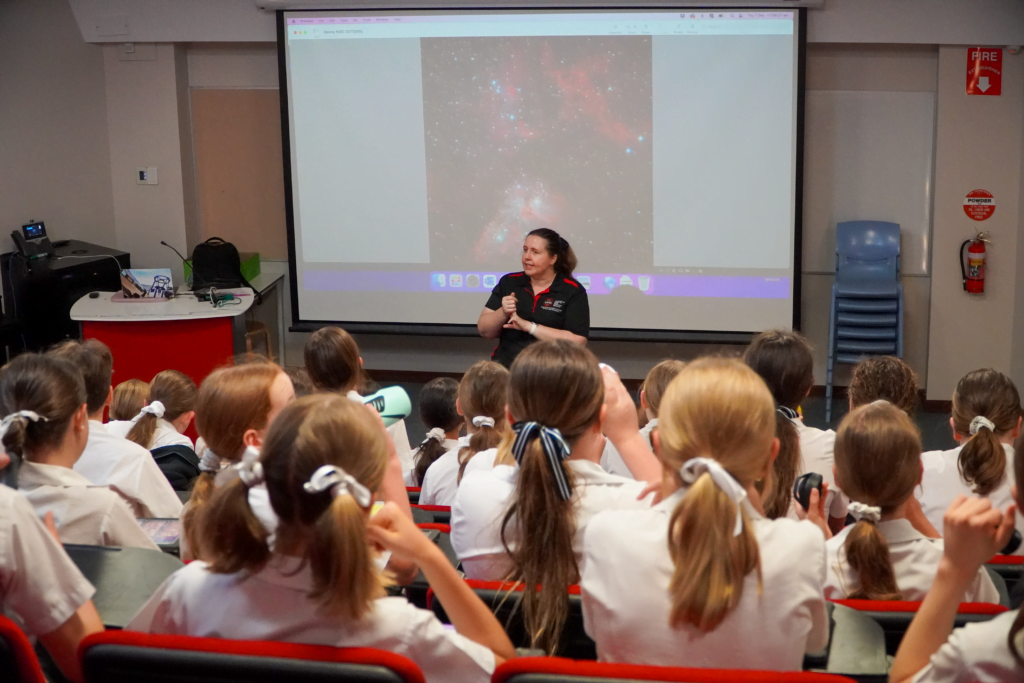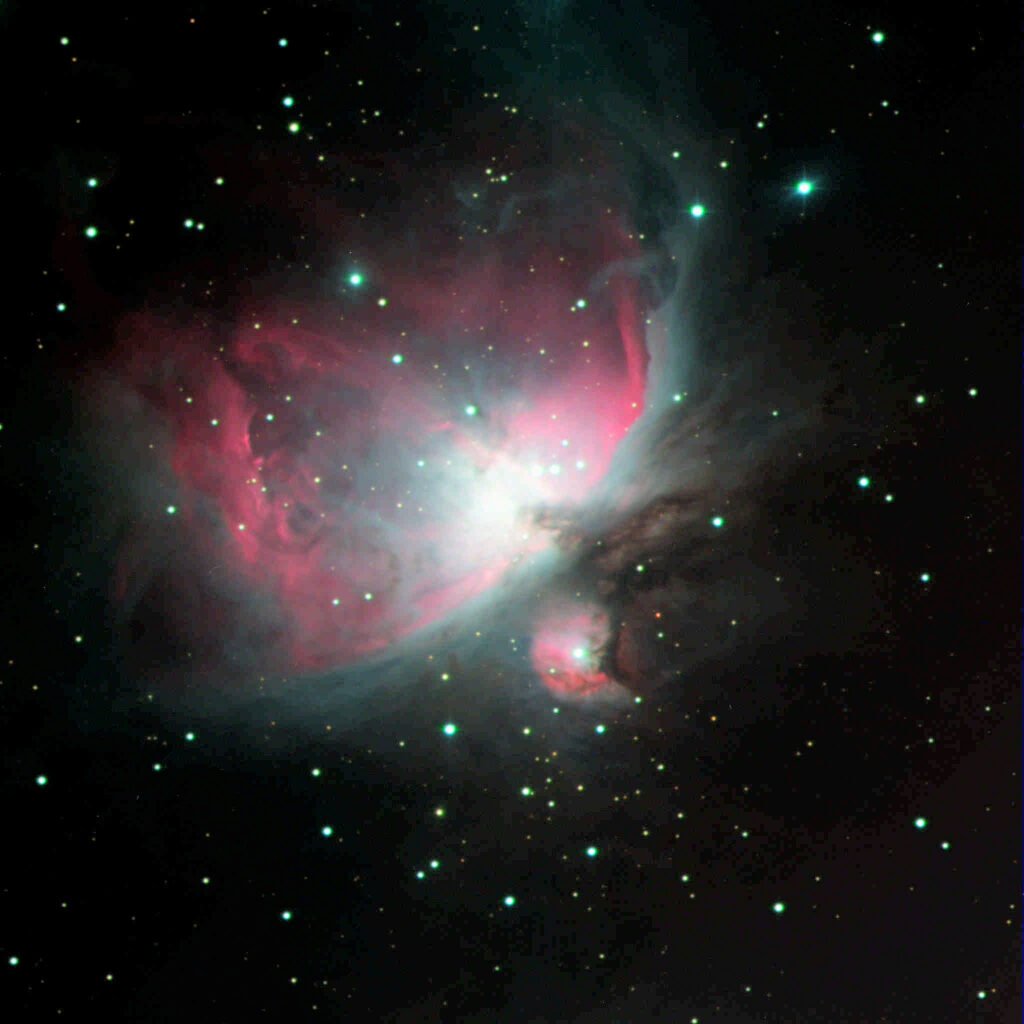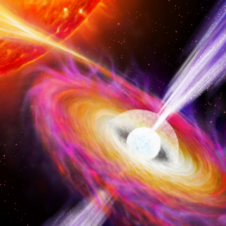Year 7 students at Presbyterian Ladies’ College (PLC) experienced working with the SPIRIT observatory, taking incredible images of the night sky, during our final school visits for the year.
This year, more than 600 students from schools across Western Australia have learned about galaxies, black holes and nebulas, and accessed the research grade SPIRIT telescopes to map and image the night sky for their school projects.

SPIRIT Coordinator Melissa Van Dam explaining to the Year 7’s at Presbyterian Ladies College (PLC) how they’ll be compiling their images.
PLC was among the 12 schools that participated in the SPIRIT program this year, which included Byford Secondary College, Butler College and Karratha Senior High School.
The SPIRIT program is designed to inspire and promote a curiosity of science, technology, engineering and technology (STEM) subjects, in young students.
With 4 research grade telescopes available, students can select objects and locations from faraway in deep space to image, and learn about their composition, structure and relationship to other objects.
The demand for student access to the SPIRIT program saw the observatory expand and move to its own permanent site in 2019, with the telescopes relocated to a purpose-built facility in the Shire of Serpentine-Jarrahdale, south of Perth.
Each telescope is capable of imaging distant objects within our solar system including comets and dwarf planets such as Pluto, along with long exposure imaging of galaxies, nebulas and stars.

A colour adjusted image of the Orion Nebula taken by Beth Wallis-Hughes from PLC. Credit: SPIRIT – Beth Wallis-Hughes
As one of the last areas of science where amateurs can make new discoveries, the SPIRIT initiative provides students the means to undertake astronomy research and the chance to make genuine scientific contributions.
If you’d like to know more about the SPIRIT program for your school, click here.

